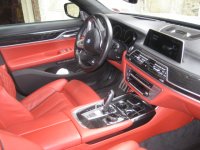In the summer the ambient temp gets over 100F. When it is hot our 20gpm Goulds Booster overheats when it is asked to run for several hours continously. The pump is new. Pump is asked to make 60 psi from.a 10k gallon tank... moving the volume if the tank in a day sometimes for itrigation and wildfire suppression.
I will check for voltage drop today. Pump installer reccomended installing 2 pumps with a load alternating switch so when one shuts off the other will turn on and Pump allowing the other to cool. Basicly splitting the work between 2 1hp pumps.
Is this the best solution?
Would a much higher horsepower rating on the pump be a better choice? Or do they make pumps with more efficient cooling systems that are designed to run in hot weather?
I'm not sure why the installer insists on booster pumps for this application as they only need to make 60 PSI. I'm wondering if 1hp myers jet pumps would be just as effective since they are 1/4 the price.
20gpm goulds booster is around $1300
27.5 gpm myers jet pump is $375.
I'm not opposed to installing a large commercial pump if that solves the problem.
Would a large certerfugal type pump be better as the move much more water? The pump is lower than the supply tanks so no suction head is needed.
Thoughts?
I will check for voltage drop today. Pump installer reccomended installing 2 pumps with a load alternating switch so when one shuts off the other will turn on and Pump allowing the other to cool. Basicly splitting the work between 2 1hp pumps.
Is this the best solution?
Would a much higher horsepower rating on the pump be a better choice? Or do they make pumps with more efficient cooling systems that are designed to run in hot weather?
I'm not sure why the installer insists on booster pumps for this application as they only need to make 60 PSI. I'm wondering if 1hp myers jet pumps would be just as effective since they are 1/4 the price.
20gpm goulds booster is around $1300
27.5 gpm myers jet pump is $375.
I'm not opposed to installing a large commercial pump if that solves the problem.
Would a large certerfugal type pump be better as the move much more water? The pump is lower than the supply tanks so no suction head is needed.
Thoughts?
Last edited:

